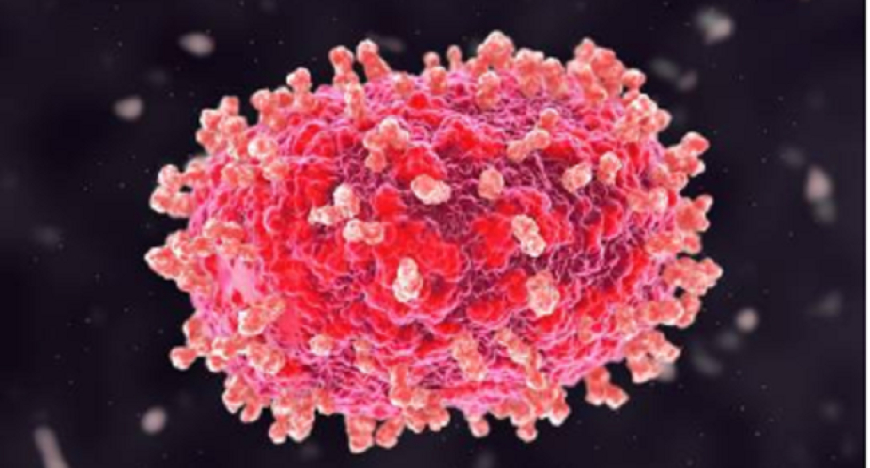What Is Mpox? How Does It Spread? Here Are Seven Facts About The Disease
Severe cases occur more commonly among children and are related to the extent of virus exposure, patient health status and severity of complications.

The World Health Organization on Wednesday declared the Mpox surge in Africa a global public health emergency, sounding its highest possible alarm over the worsening situation.
Worried by the rise in cases in the Democratic Republic of Congo and the spread to nearby countries, the WHO hastily convened a meeting of experts to study the outbreak.
“Today, the emergency committee met and advised me that in its view, the situation constitutes a public health emergency of international concern. I have accepted that advice,” WHO chief Tedros Adhanom Ghebreyesus told a press conference.
The outbreak has swept through several African countries, particularly the Democratic Republic of Congo, where the virus formerly called monkeypox was first discovered in humans in 1970.
According to Africa Centres for Disease Control and Prevention (Africa CDC) data as of August 4, there had been 38,465 cases of Mpox and 1,456 deaths in Africa since January 2022.
In light of this, there have been many rumors and misinformation about the disease. Here are seven key things to know about Mpox that will set the record straight:
What is Mpox?
According to the World Health Organisation, Mpox is a rare viral zoonosis (a virus transmitted to humans from animals) with symptoms in humans like those seen in the past in smallpox patients, although less severe. Smallpox was eradicated in 1980. However, mpox still occurs sporadically in some parts of Africa.
Mpox is a member of the Orthopoxviral genus in the family Poxviridae.
The virus was first identified in the State Serum Institute in Copenhagen, Denmark, in 1958 during an investigation into a pox-like disease among monkeys.
Where did it originate?
Human mpox was first identified in humans in 1970 in the Democratic Republic of Congo, in a 9-year-old boy, in a region where smallpox had been eliminated in 1968. Since then, most of the cases have been reported in rural, rainforest regions of the Congo Basin and western Africa, particularly in the Democratic Republic of Congo, where it is endemic. In 1996-97, a major outbreak occurred in the Democratic Republic of Congo.
However, 2003 saw the confirmation of cases in the Midwest of the United States of America, marking the first reported occurrence of the disease outside of the African continent. Most of the patients were reportedly said to have had close contact with pet prairie dogs.
In 2005, a mpox outbreak occurred in Unity, Sudan and sporadic cases have been reported from other parts of Africa. Further, in 2009, an outreach campaign among refugees from the Democratic Republic of Congo into the Republic of Congo identified and confirmed two cases of mpox. Between August and October 2016, a mpox outbreak in the Central African Republic was contained with 26 cases and two deaths.
What are the symptoms?
The interval from infection to onset of symptoms of mpox usually runs from Six through 16 days but can range from Five to 21 days.
The number of scratches varies from a few to several thousand, affecting 70 percent of cases in spoken self-lubricating skins, 30 percent of cases in genitalia, and 20 percent of cases in the eyelid, as well as the eyeball.
Some patients develop severe swell in their lymph nodes before the appearance of the rash, which is a distinctive feature of mpox compared to other similar diseases.
Mpox is usually a self-limited disease with symptoms lasting from 14 to 21 days. Severe cases occur more commonly among children and are related to the extent of virus exposure, patient health status, and severity of complications.
People living in or near the forested areas may have indirect or low-level exposure to infected animals, possibly leading to subclinical (asymptomatic) infection.
The case fatality has varied widely between epidemics but has been less than 10 percent in documented events, mostly among young children. In general, younger age groups appear to be more prone to mpox.
How is it treated?
There are no specific treatments or vaccines available for mpox infection, but outbreaks can be controlled. Vaccination against smallpox has been proven to be 85 percent effective in preventing mpox in the past. The vaccine is no longer available to the public after it was discontinued following global smallpox eradication. Nevertheless, prior smallpox vaccination will likely result in a milder disease course.
How does it spread?
Infection of index cases results from direct contact with the blood, bodily fluids, or cutaneous or mucosal cuts of infected animals. Human infections in Africa have been documented through the handling of infected monkeys, Gambian giant rats, and squirrels, with rodents being the major tank of the virus. Eating inadequately cooked meat of infected animals is also a possible risk factor.
Secondary transmission can result from close contact with infected respiratory tract secretions, skin lesions of an infected person or objects recently contaminated by patient fluids or lesion materials. Transmission occurs primarily through droplets of respiratory particles, usually requiring prolonged face-to-face contact, which puts household members of active cases at greater risk of infection. Transmission can also occur by immunization or by the placenta, otherwise known as congenital monkeypox.
Currently, there is no evidence that person-to-person transmission alone can sustain mpox infections in the human population.
In recent animal studies of the prairie dog-human monkeypox model, two distinct clades of the virus were identified – the Congo Basin and the West African clades – with the former found to be more virulent.
Diagnosis
Several diagnoses must be considered including other rash illnesses, such as smallpox, chickenpox, measles, bacterial skin infections, scabies, syphilis, and medication-associated allergies. Monkeypox can only be diagnosed definitively in the laboratory where the virus can be identified by either of the following: Enzyme-Linked Immune Sorbent Assay, Antigen Detection tests, Polymerase Chain Reaction (PCR), or Virus Isolation by cell culture.
Reducing the risk of infection in people
Humans have been advised to avoid having close contact with other patients, as this has been proven to be the most significant risk factor for mpox virus infection. However, in the absence of specific treatment or vaccine, the only way to reduce infection in people is by creating and increasing awareness of the risk factors and educating people about the measures they can take to reduce exposure to the virus. Surveillance measures and rapid identification of new cases are critical for outbreak containment.



 moderator
moderator 





